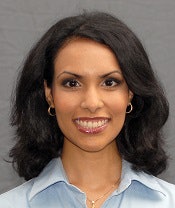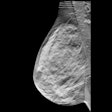
Since 2009, 28 states have enacted breast density notification legislation -- a victory, say women's health advocates. So how are radiologists reacting, particularly in regard to assessing breast cancer risk and offering supplemental imaging? With caution, according to a new study published in The Breast Journal.
California researchers found that in response to breast density notification legislation, 33% of facilities have put new breast cancer screening programs in place, primarily with whole-breast ultrasound (WBUS) or digital breast tomosynthesis (DBT), while 40% have begun performing formal risk assessment using tools such as the Gail or Tyrer-Cusick models.
Why aren't these percentages higher? Because key questions such as which modality is most effective, which patients would benefit most from supplemental screening, and which studies would be covered by insurance remain unresolved, lead author Dr. Lina Nayak from the University of California, San Francisco (UCSF) and Stanford University told AuntMinnie.com.
"There are plenty of breast imaging facilities that don't offer supplemental screening -- in part because it's often not covered by insurance," she said. "Also, it's still unclear what type of imaging is most helpful and which patients benefit most."
Assessing impact
Despite the rapid spread of this kind of legislation, there has been little guidance for breast imaging facilities about supplemental screening, according to Nayak and colleagues. That's why they conducted the research (The Breast Journal, June 14, 2016).
 Dr. Lina Nayak from UCSF and Stanford University.
Dr. Lina Nayak from UCSF and Stanford University."The purpose of this study is to assess the impact of breast density legislation on radiology practices, specifically on implementing breast cancer risk assessment and supplemental screening studies," the group wrote.
To this end, Nayak's team conducted a web-based survey of Society of Breast Imaging members between August 2013 and March 2014. The survey gathered data for five categories: demographic data, breast cancer risk assessment, estimating breast density, supplemental screening studies, and educational methods for preparing referring doctors for the changes mandated by the new laws.
The researchers received responses from 121 radiologists at 110 facilities in 34 states and one Canadian site. Of these 110 facilities, 44% were academic sites, 39% were large private practices with 10 or more radiologists, 14% were small private practices (fewer than 10 radiologists), 1.8% were publicly funded county hospitals, and 1.8% were military hospitals. Half of the facilities were in states with breast density notification legislation, and half were in states that did not have this legislation.
Of the participating survey respondents, 36% said their facility performed formal breast cancer risk assessment, while 38% said their facility did not formally assess a woman's risk but reported her family history or other risk factors; 27% said the facility did neither of these things. Of those facilities in states with a density law that were already conducting formal risk assessment with their patients, 40% said this was a new protocol.
"This is the second key finding from our research -- that in response to breast density notification legislation, more facilities are performing formal risk assessment on their patients," Nayak said.
As for estimating breast density, 98% of survey respondents said this was carried out by visual assessment using BI-RADS categories. Only 2% of facilities used a computer-based breast density assessment tool.
As for the modality used to conduct supplemental studies, Nayak's team found that 33% of facilities in states with breast density notification laws implemented the use of handheld whole-breast ultrasound in response to the legislation, while 6% began to use automated WBUS and 6% began to use DBT. The ratio of facilities offering handheld WBUS was significantly higher in states with a law than in those without.
Finally, most of the facilities in states with enacted density notification laws used one or more educational method to prepare referring physicians, with the most common method being informal discussion (71%), referral to a website (50%), and educational lectures delivered at grand rounds or tumor boards (44%).
Opportunity knocks
The fact that more than half of U.S. states now have breast density notification laws is not only changing the way women participate in their healthcare, but also how they perceive breast cancer screening, according to Nayak.
"Women are now increasingly aware of the possibility that screening mammography may not be enough to detect cancer, particularly if they are at high risk," she told AuntMinnie.com. "And this is prompting them to be more informed healthcare consumers."
Breast density notification laws present many challenges, the researchers wrote. But they also offer an opportunity for radiologists to proactively shape the shift toward personalized medicine by leading individualized risk assessment and scientific investigations that could inform optimal breast cancer screening protocols.
"We hope these study results will help both individual radiologists and their practices gauge how to proceed in this area," Nayak said. "Certainly, as evidence builds regarding additional screening modalities, and as insurers begin to cover these exams, it's likely that more facilities will develop and implement their own supplemental screening protocols."




















